#autofluorescence
Text

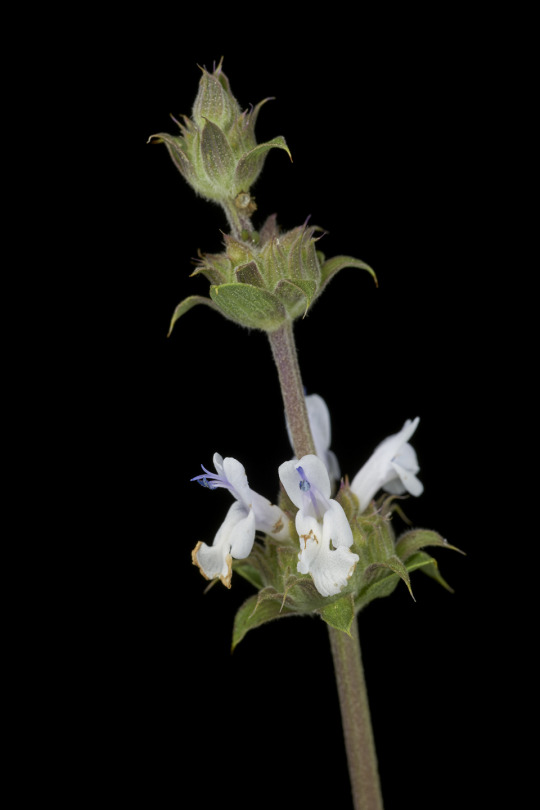
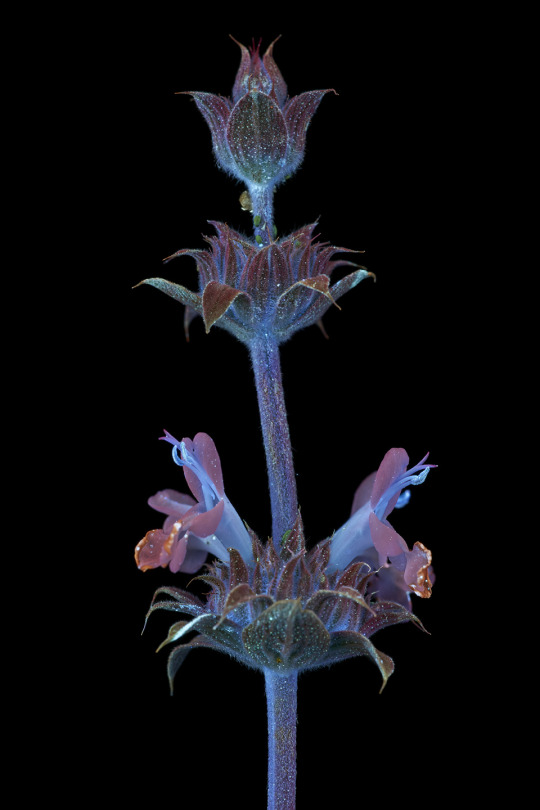
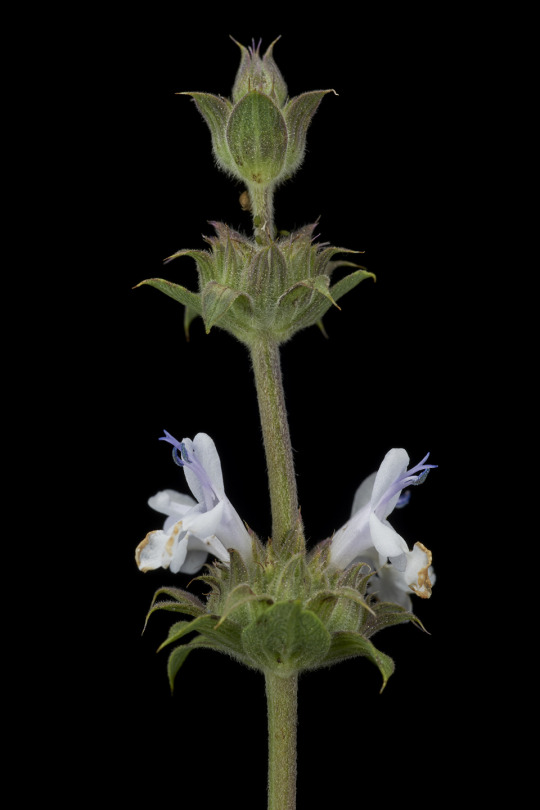

Salvia mellifera, black sage, is a perennial shrub in the mint/sage family native from central California down through the top of Baja California. It is part of the cast of plants present in coastal sage and chaparral habitat, thriving only in a specific range of rainfall in a mediterranean climate. The flowers host a variety of pollinators including butterflies, hummingbirds, and native bees and its seeds, like other Salvia species, are abundant and provide food for animals and birds. The fragrant leaves contain chemicals used by the Chumash to treat pain and a unique spicy honey is derived from the plant in the modern day.
108 notes
·
View notes
Video
Trust Your Eyes
"Can’t see the wood for the trees". It isn’t just an old English proverb, it’s also a problem scientists grapple with when imaging whole organs during animal model experiments. They want to see the fine details (the trees) but also capture the entire organ (the wood). Researchers now present an affordable, rapid and high-resolution approach to image whole organs in 3D called TRUST (Translational Rapid Ultraviolet-excited Sectioning Tomography). Using an inexpensive ultraviolet LED light and a colour camera, TRUST imaging of sections through mouse tissue captured images of fluorescent dyes bound to specific molecules and autofluorescence generated by unstained tissue. The result? Detailed 3D images of whole mouse organs, such as the brain and heart, as well as tissue networks, such as blood vessels of the brain (pictured) and nerves. Entire mouse embryos were also imaged, revealing how TRUST can help investigate health and disease, as well as development.
Written by Lux Fatimathas
Video from work by Wentao Yu and colleagues
Department of Chemical and Biological Engineering, Hong Kong University of Science and Technology, Hong Kong, Hong Kong, China
Video originally published with a Creative Commons Attribution 4.0 International (CC BY 4.0)
Published in eLife, November 2022
You can also follow BPoD on Instagram, Twitter and Facebook
14 notes
·
View notes
Text
Technique using light and artificial intelligence is effective in selecting immature soybean seeds

- By Luciana Constantino , Agência FAPESP -
Historically based on tradition and experience, the decision-making process in agriculture has been transformed in recent years by technological innovations that scale up production and provide solutions to the challenges posed by pests, natural limitations on arable land and the effects of climate change.
Brazilian researchers have developed a technique to help select seeds of soybeans and other legumes in accordance with maturity stages, assuring physiological quality without destroying samples.
The scientists used light and artificial intelligence (AI) to show that chlorophyll fluorescence is an effective and reliable indicator of soybean seed maturity. They validated the results by means of machine learning algorithms. The novel technique can be used to classify commercial seeds.
The greener and less mature the seeds, the less vigor and germinating power they have, so that their quality is lower. As a result, the market value of soybean seed lots with more than 8% green seeds is reduced and they cannot be exported. Green seeds also produce less oil, with higher acidity and higher refining costs.
Manual seed quality analysis is required by law in Brazil. It must be performed by a technician accredited with the Ministry of Agriculture and entails visual separation based on color. Green seeds are discarded and destroyed, forming waste.
“I consider this study a milestone. No studies in the literature to date have addressed the possibility of separating seed stages based on chlorophyll fluorescence. The method can be used for other legumes besides soybeans. It’s a major advance in scientific knowledge,” said Thiago Barbosa Batista, first author of an article on the study published in the journal Frontiers in Plant Science.
The research was part of Batista’s PhD thesis, developed with FAPESP’s support. His thesis advisor was Edvaldo Aparecido Amaral da Silva, a professor at São Paulo State University's School of Agricultural Sciences (FCA-UNESP) in Botucatu, and last author of the article.
“Phenotyping various kinds of seed was the main reason for starting our thematic group. We focused on chlorophyll retention and its association with low quality, and this in turn led to the need to analyze the stages of seed development. The results of this study enhance the reliability of maturity characterization when seeds are similar shades of green, especially in nearby stages,” said Amaral da Silva, who leads a project on the “green seed problem”.
The study was conducted in partnership with Clíssia Barboza da Silva, a researcher at the Radiobiology and Environment Laboratory belonging to the University of São Paulo's Center for Nuclear Energy in Agriculture (CENA-USP). Barboza da Silva is also supported by FAPESP via three projects (17/15220-7, 18/03802-4, and 18/01774-3).
“This technique avoids destroying seeds, which are classified automatically by the AI algorithm. We currently analyze samples, but it could be done seed by seed in future,” she said.
For some years Barboza da Silva has analyzed seeds using light-based technologies such as autofluorescence spectral imaging. In September 2021, a study led by her showed that images based on autofluorescence could be used to detect changes in the optical properties of soybean seed tissue and consistently distinguish between seeds with high and low vigor. An article on the study was published in Scientific Reports.
Maturity in images
The researchers sowed soybean seeds in pots, maintaining relative air humidity at 65% and average air temperature at 24.2 °C. Pods were collected manually during the maturation phase, and the seeds were classified by reproductive stage, as R7.1 (start of maturation), R7.2 (mass maturity), R7.3 (seed disconnected from mother plant), R8 (harvest point), or R9 (final maturity).
Physical parameters, germination, vigor and pigment dynamics were analyzed for seeds collected at different stages of maturation.
High-resolution autofluorescence spectral images (2192x2192 pixels) were captured using a VideometerLab4 system with light-emitting diodes (LEDs) at different excitation wavelengths combined with long-pass optical filters.
Autofluorescence signals were extracted from images captured at different excitation/emission combinations, but the researchers concluded that the combinations 660/700 nanometers (nm) and 405/600 nm performed fastest and most accurately in identifying the different stages of seed maturation.
Chlorophyll is highly fluorescent. It emits light when exposed to radiation at specific wavelengths because it does not use all the energy from the light and “loses” part of it via fluorescence. This “surplus” is captured by the equipment, which converts it into an electrical signal, generating an image with varying shades of gray as well as white and black. The lighter the area, the higher the chlorophyll content, showing that the seed is less mature.
Mature seeds normally retain chlorophyll as a source of energy while the nutrients required for development of the young plant (lipids, proteins and carbohydrates) are being stored. After fulfilling this function, the chlorophyll degrades, and the less chlorophyll remains, the more advanced the seed is in the maturation process, with more nutrients and better quality.
The “green seed problem” refers to chlorophyll retention in mature seeds and is associated with lower oil and seed quality. It can be caused by frost but is exacerbated by the high temperatures and water stress brought by climate change in recent years.
The article “A reliable method to recognize soybean seed maturation stages based on autofluorescence-spectral Imaging combined with machine learning algorithms” is at: www.frontiersin.org/articles/10.3389/fpls.2022.914287/full.
This text was originally published by FAPESP Agency according to Creative Commons license CC-BY-NC-ND. Read the original here.
--
Header image: Researcher Clíssia Barboza da Silva capturing images of soybean seed chlorophyll fluorescence with the VideometerLab4. Credit: Thiago Barbosa Batista/UNESP.
Read Also
‘Super-spuds’ to the rescue as typical tubers feel the heat
#agriculture#agtech#agritech#ai#artificial intelligence#light#soybean#crops#soy#autofluorescence#imaging#food#brazil#plants#biology
2 notes
·
View notes
Text
Creamy college pussy
Jerking off again White Socks
Serena Santos In Submissive Boss Chick
Gia Paige And Blair Williams Fucked Hard
Thai girl sucking dildo and solo pussy
In shape Latina Lena Juliette gets two cocks, two facials
Sienna Day sexy blonde with big juggs masturbates
If you have a mustache you can fuck teens whenever
la vecina esta queriendo follar con su short provocativo
Armpit cute teen shave like kiss
#inundate#omniprevalence#Abgatha#uncomprehension#diverb#tinkle#autofluorescence#disenchanter#hype#grandpapa#lugubrious#subpassage#tuberculide#overplain#Akhissar#edibilities#abdicated#Fringetail#Lodgegrass#admrx
0 notes
Text

Autofluorescence of the tip of the stamens of flowers at 405 nm, 488 nm, and 561 nm, emitting a greenish blue and emerald green color like peacock feathers.
By Mei Yu (China)
Light Microscopy Awards
#mei yu#photographer#china#light microscopy awards#micro photography#autofluorescence of the tip of the stamens of flowers#nature
50 notes
·
View notes
Text
Hey everyone go to bonecrate dot gov and use promo code Sighialmr for 20 Us dollars off your first monthly crate that ill send you (note some boxes may contain violations of your states protected species act and i am not to be held liable)





#This is a joke#Using these in microscopy and i find it funny how they were given to me loose in a box#Also these guys are all safe for collection though. they’re 30yo research specimens#bonus you get loose cat finger and a random lizard hand#Planning on taking a tooth from each fish#teeth autofluoresce really well
4 notes
·
View notes
Text
Fresh understanding of ageing in the brain offers hope for treating neurological diseases
Newswise — Scientists from the Trinity Biomedical Sciences Institute (TBSI) have shed new light on ageing processes in the brain. By linking the increased presence of specialised immune cells to conditions such as Alzheimer’s disease and traumatic brain injury for the first time, they have unearthed a possible new target for therapies aimed at treating age-related neurological diseases.
The…
View On WordPress
0 notes
Text

Hazelnut (male flower), overlay of 7 channel autofluorescence microscopy. Imaged with ZEISS Axio Observer, Axiocam, Colibri 7.
49 notes
·
View notes
Note
you're a researcher!! that's so cool! if you don't mind me asking, what do you do?
Thank you for the ask, I love talking about my research!! Currently, I'm working on studying barley and its interaction with Pseudomonas fluorescens using a clear hydrogel media instead of soil. I got interested in this project because I think that the ability to grow plants in hydrogel instead of soil to study their roots is such a cool thing, and since I'm majoring in both plant and microbial biotechnology adding the bacterial aspect helps bring everything I'm working on all together (and is something I can make a paper out of). Then to add biotechnology into the equation, we added GFP (green fluorescent protein) into the bacteria, which causes them to glow green when hit with UV light and viewed under a filter. This makes it easier to see the bacteria on the roots.
Because this projects excites me so much and has some cool pictures, I have to share some. The first picture are roots without any bacteria and the second one has the bacteria. Feel free to take a second and see if you can identify any differences between the two images.


The first noticeable thing I see is within the hydrogel itself. The non-bacterial control has a much darker background, likely because there are no bacteria to fluoresce in it. However, you may notice that the roots still have a glow to them. That's actually because plants have autofluorescence based on the proteins/chemicals they produce which was visible through the filter. Now, the things that stand out to me on the bacterial roots compared to the regular ones are that they almost have a rougher appearance, likely due to the bacteria colonies growing on it. And then there is the bright spots of bacteria that are not present on the bacteria-free roots. Seeing such a stark difference so easily (since I have been looking at images of these for a while now and know what I'm looking for) honestly blew me away when this actually seemed to work.
Also, just to talk about autofluorescence again, the chlorophyll in the leaves make the plants so bright in this system. I mean look at that leaf!! I never though I'd see such a pretty plant (the last one looks slightly different from the rest because it was taken with my phone instead of the microscope camera, but catches the entire autofluorescence really well).


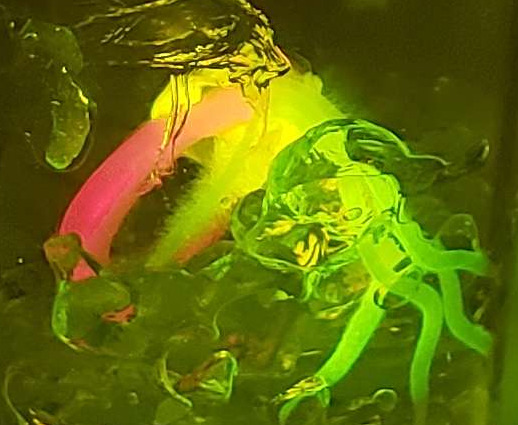
And to wrap this whole spiel up, let me give a little background on where I started with doing research. I actually started out by doing data analysis on differential gene expression, or the differences in expression under different conditions. A lot of analysis uses an "out of 100%" model if you will, and because of this if one gene changes expression a lot but everything else stays the same, it'll look like all those genes have lower expression compared to the one that changed even if they might not. You can see how that might be a bit of a problem. I was testing a new R package that would compare gene expression in a different way to bypass this problem and more clearly see what is actually happening to different genes.
Because I was just helping a bit on this project I never saw its conclusions before moving onto other things. I took a side off of that project to get a grant and do a systematic review on how other researchers are describing their gene expression clustering, since in R you need to define the clustering method (how different groups are compared to one another) and the number of clusters you want. Because these are human entered and can change the outcome of the data you're analyzing, it's important that what you do can be replicated, but a lot of researchers were very vague in even what packages they used to cluster. I'm still finishing up that work so hopefully I'll be able to publish a paper on it soon.
Then I've also had fun helping some of our grad students with barley biomass measurements and, my absolute favorite, soil microbe DNA extraction. That student is using differences in the soil microbiome to see if it has an impact on the growth of the barley, and is actually what inspired me to student plant-microbe interactions!
#I tried to sum all of my research experience up but if there are anymore questions please feel free to ask!#This turned into a bigger ramble than I was expecting whoops#Sorry for the delay I've been traveling and knew I had to share the images that were on my laptop#I have a love-hate relationship with explaining research to a general audience#I love it because it is a skill all scientists should have should have because research should be understandable by all#But with how specialized I've become in what I do it can sometimes be so hard to explain it in a way everyone can understand#It's okay tho because my boss can't understand what I'm doing if I don't explain it in simpler terms because she's not working on this#That being said if anything is confusing I'd love to try and clear it up!#Hoping these projects will be finished before I graduate and turned into published papers
5 notes
·
View notes
Text
An Overview of the Age Related Macular Degeneration Market: Trends and Insights
The age-related macular degeneration (AMD) market is influenced by various trends and insights that shape its dynamics and growth trajectory.

For more age segment insights, download a free report sample
Here's an overview of some key trends and insights in the AMD market:
Prevalence and Demographics: AMD primarily affects older adults, particularly those aged 50 and above. With global aging populations, the prevalence of AMD is increasing steadily. This demographic trend drives demand for AMD treatments and diagnostic solutions.
Advancements in Diagnostic Technologies: Innovations in diagnostic technologies, such as optical coherence tomography (OCT) and fundus autofluorescence imaging, have revolutionized the early detection and monitoring of AMD. Early diagnosis allows for timely intervention and management, potentially slowing disease progression and preserving vision.
Treatment Landscape Evolution: The treatment landscape for AMD has evolved significantly over the years. The introduction of anti-vascular endothelial growth factor (anti-VEGF) therapies, such as ranibizumab and aflibercept, has revolutionized the management of neovascular (wet) AMD, leading to improved visual outcomes for patients.
Emerging Therapeutic Approaches: Alongside anti-VEGF therapies, several emerging therapeutic approaches are being explored for AMD treatment. These include novel drug delivery systems, gene therapies, complement inhibitors, and regenerative medicine approaches aimed at addressing various aspects of AMD pathophysiology.
Personalized Medicine: There is a growing emphasis on personalized medicine in AMD treatment, driven by the recognition of inter-individual variability in treatment response and disease progression. Biomarkers, genetic testing, and imaging biomarkers are being investigated to tailor treatment strategies based on individual patient characteristics.
Healthcare Policy and Reimbursement Landscape: Reimbursement policies and healthcare regulations influence access to AMD treatments and diagnostic services. Variations in reimbursement policies across regions can impact market access and adoption rates for innovative therapies.
Patient-Centric Care Models: Patient-centric care models are gaining prominence in AMD management, focusing on holistic patient care, education, and support services. Multidisciplinary care teams comprising ophthalmologists, optometrists, retinal specialists, and allied healthcare professionals play a crucial role in delivering comprehensive care to AMD patients.
Research and Development Investments: Pharmaceutical companies, biotechnology firms, and academic institutions continue to invest heavily in AMD research and development (R&D). Clinical trials are underway to explore novel therapeutic targets, combination therapies, and innovative treatment modalities to address unmet needs in AMD management.
Global Market Expansion: The AMD market is expanding globally, with significant growth opportunities in emerging markets such as Asia-Pacific and Latin America. Rising healthcare expenditure, improving healthcare infrastructure, and increasing awareness of AMD contribute to market growth in these regions.
Collaborations and Partnerships: Collaboration between industry players, research organizations, and healthcare providers is essential for driving innovation and accelerating the development of new AMD therapies and diagnostic solutions. Collaborative efforts facilitate knowledge sharing, resource pooling, and the translation of scientific discoveries into clinical practice.
In summary, the AMD market is characterized by ongoing advancements in diagnostics and therapeutics, a shift towards personalized medicine, and a focus on patient-centric care models. Continued investments in research, collaborations, and global market expansion efforts are expected to shape the future landscape of AMD management.
0 notes
Photo

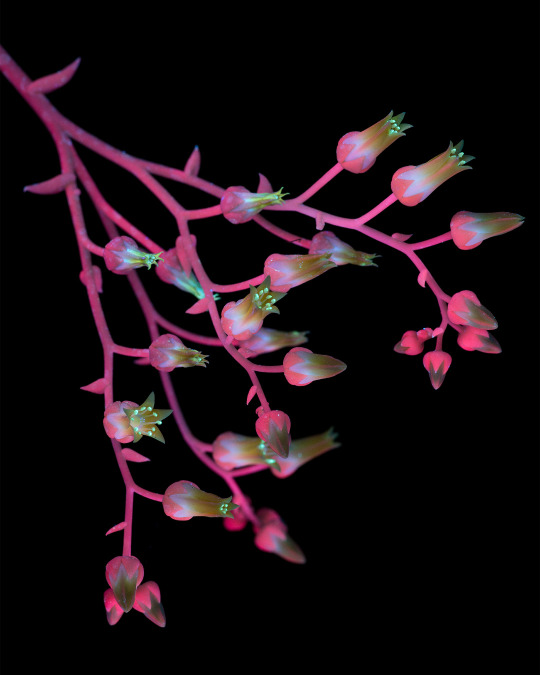
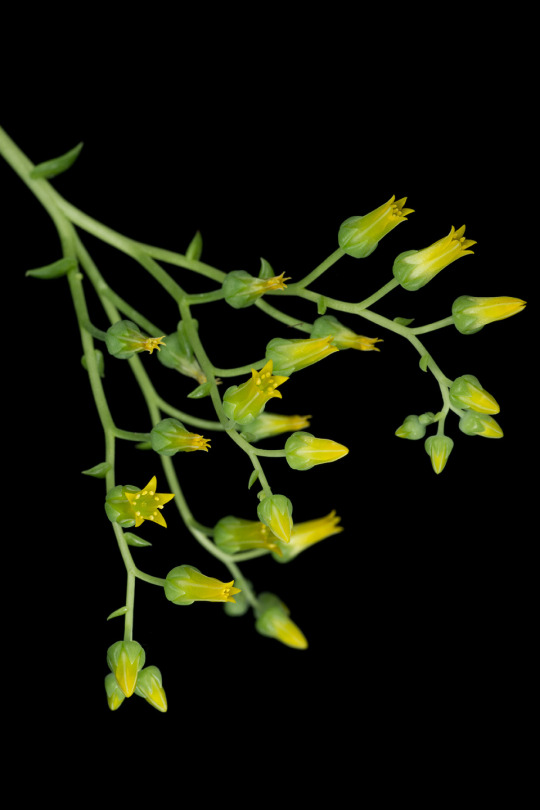



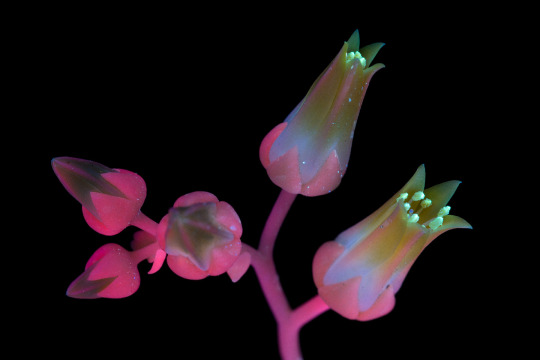
Dudleya cymosa ssp. pumila is a succulent native and endemic to California, meaning it cannot be found growing naturally anywhere else in the world. This plant is most often found on north-facing canyon walls and roadcuts throughout the transverse ranges (a series of mountains that run east-west through CA instead of the usual north-south.) Dudleya in general have special adaptations which allow them to survive challenging environments, in this case growing in the wet but coldest part of the year and surviving a long, very hot, and very dry summer.
Even in this subspecies there are many included forms, with varying traits such as flower color, leaf farina, altitude, etc., which goes in hand with Dudleya being a genus of complicated and still-developing taxonomy with quite a lot of undescribed species. Molecular phylogeny is making this possible by sampling genetic material to determine evolutionary relationships. This process is further complicated by the fact that Dudleya is a highly poached genus and many populations of unique plants are threatened by sprawling human development and introduced herbivores before they even have a chance to be recognized.
Dudleya is one of my favorite genera of plants, so expect to see more of them in my posts in the future!
299 notes
·
View notes
Link
Autofluorescence indicates the activity level of neural stem cells ..
0 notes
Text
Advancing Ophthalmic Imaging: Unveiling the Benefits of Heidelberg Spectralis
In the realm of ophthalmology, precise and comprehensive imaging is crucial for the diagnosis and management of various eye conditions. Enter the Heidelberg Spectralis, a state-of-the-art imaging platform renowned for its unparalleled capabilities in capturing high-resolution images of the retina and anterior segment. This article explores the key advantages of the Heidelberg Spectralis and its significance in modern ophthalmic practice.
Unrivaled Precision and Detail:
- The Heidelberg Spectralis utilizes spectral domain optical coherence tomography (SD-OCT) technology to capture detailed cross-sectional images of ocular structures.
- With its high-resolution imaging capabilities, the Spectralis provides clinicians with unparalleled insights into retinal layers, optic nerve morphology, and anterior segment anatomy.
- The system's ability to visualize even the smallest pathological changes with exceptional detail enables early detection and precise monitoring of various eye diseases.
Multi-Modal Imaging Capabilities:
- In addition to SD-OCT, the Heidelberg Spectralis offers a comprehensive suite of imaging modalities, including fundus autofluorescence (FAF), fluorescein angiography (FA), and indocyanine green angiography (ICG).
- Multi-modal imaging with the Spectralis allows clinicians to correlate structural changes seen on OCT with functional alterations captured by other imaging modalities, enhancing diagnostic accuracy and treatment planning.
- The integration of multiple imaging modalities within a single platform streamlines workflow efficiency and provides a holistic approach to ophthalmic evaluation.
Real-Time Tracking and Registration:
- The Heidelberg Spectralis features eye-tracking technology that ensures precise alignment and registration of images, even in patients with involuntary eye movements.
- Real-time tracking and registration minimize motion artifacts and enable accurate follow-up imaging, facilitating longitudinal assessment of disease progression and treatment response.
- The system's ability to track changes in retinal morphology over time is particularly valuable for monitoring degenerative conditions such as age-related macular degeneration (AMD) and diabetic retinopathy.
Enhanced Patient Comfort and Safety:
- The Heidelberg Spectralis is designed with patient comfort and safety in mind, featuring a non-contact imaging process that eliminates the need for pupil dilation.
- The system's rapid image acquisition speed reduces examination time, minimizing patient discomfort and enhancing overall satisfaction.
- Non-invasive imaging with the Spectralis ensures minimal risk of infection or injury, making it suitable for patients of all ages and clinical conditions.
Customized Imaging Protocols:
- Clinicians can customize imaging protocols on the Heidelberg Spectralis to suit the specific needs of each patient and clinical scenario.
- Customizable parameters include scan size, orientation, and depth, allowing for tailored imaging of specific retinal regions or pathologies.
- The flexibility to adjust imaging parameters ensures optimal image quality and diagnostic accuracy across a wide range of ophthalmic conditions.
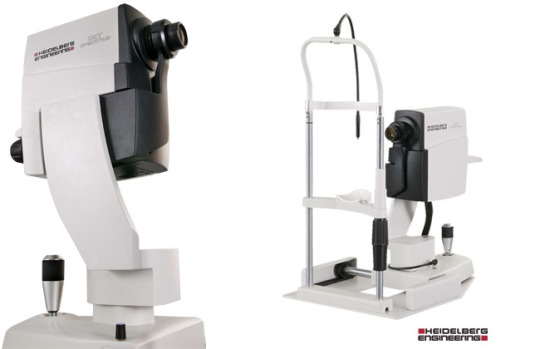
Seamless Integration with Clinical Workflow:
- The Heidelberg Spectralis seamlessly integrates with electronic medical records (EMR) systems and other ophthalmic devices, facilitating efficient data management and communication.
- Images captured with the Spectralis can be easily accessed and shared with colleagues for collaborative decision-making and consultation.
- The system's intuitive user interface and automated image analysis tools enhance workflow efficiency, allowing clinicians to focus more time on patient care.
0 notes
Text
Understanding the Dynamics of the Dry Age-related Macular Degeneration Market: Drivers, Barriers, and Future Outlook

Dry age-related macular degeneration (AMD) is a chronic eye condition characterized by the gradual deterioration of the macula, a small area near the center of the retina responsible for sharp, central vision. Dry AMD is the most common form of AMD, accounting for approximately 85-90% of all cases. Unlike wet AMD, which involves abnormal blood vessel growth beneath the macula, dry AMD typically progresses more slowly and is characterized by the accumulation of yellow deposits called drusen in the macula.
Dry Age-related Macular Degeneration Market Drivers
Aging Population: The aging population is a significant driver of the dry AMD market, as AMD primarily affects individuals over the age of 50. With demographic trends indicating a growing proportion of elderly individuals worldwide, the prevalence of dry AMD is expected to increase, driving demand for diagnostic services, treatments, and supportive care products.
Rising Disease Burden: Dry AMD is a leading cause of vision loss and blindness in older adults, contributing to a substantial disease burden and socioeconomic impact. As the prevalence of dry AMD continues to rise, particularly in developed countries with aging populations, there is an increasing need for effective management strategies to prevent disease progression and preserve vision.
Advancements in Diagnostic Technologies: Technological advancements in imaging modalities, such as optical coherence tomography (OCT), fundus autofluorescence (FAF), and adaptive optics imaging, have improved the early detection and monitoring of dry AMD. These non-invasive imaging techniques enable more accurate assessment of retinal changes, drusen morphology, and disease progression, facilitating timely intervention and personalized treatment approaches.
Research and Innovation: Ongoing research efforts aimed at elucidating the pathogenesis of dry AMD, identifying novel therapeutic targets, and developing innovative treatment modalities drive innovation in the dry AMD market. Research areas of interest include anti-inflammatory agents, neuroprotective compounds, stem cell therapy, gene therapy, and drug delivery systems designed to target specific pathways implicated in AMD pathophysiology.
Clinical Trial Activity: The increasing prevalence of dry AMD and the need for effective treatment options have led to a surge in clinical trial activity focused on evaluating investigational therapies for dry AMD. Pharmaceutical companies, biotechnology firms, academic institutions, and government agencies are conducting clinical trials to assess the safety, efficacy, and tolerability of novel drugs, biologics, gene therapies, and cell-based interventions for dry AMD.
Regulatory Support and Incentives: Regulatory agencies provide support and incentives to expedite the development and approval of new treatments for dry AMD. Designations such as orphan drug status, fast track designation, breakthrough therapy designation, and priority review designation streamline the regulatory review process and accelerate market access for promising therapies targeting unmet medical needs in dry AMD.
Patient Advocacy and Awareness: Patient advocacy organizations and support groups play a crucial role in raising awareness about dry AMD, educating patients and caregivers, and advocating for improved access to treatment and supportive care services. Increased awareness of the importance of early detection, regular eye exams, and adherence to treatment regimens promotes proactive management of dry AMD and enhances patient outcomes.
Healthcare Infrastructure and Access to Care: Access to comprehensive eye care services, including retinal specialists, low vision rehabilitation programs, and low vision aids, is essential for effectively managing dry AMD and optimizing visual function. Investments in healthcare infrastructure, telemedicine platforms, and community-based outreach programs expand access to eye care services, particularly in underserved areas with limited access to specialty care.
Market Competition and Collaboration: Competition among pharmaceutical companies, biotechnology firms, and medical device manufacturers drives innovation and investment in the dry AMD market. Collaborations, partnerships, and licensing agreements between industry players facilitate the development and commercialization of novel therapies, diagnostic technologies, and supportive care products, enhancing market competitiveness and diversifying treatment options for patients.
Reimbursement Landscape: Reimbursement policies, coverage decisions, and pricing strategies influence market dynamics and access to dry AMD treatments. Payer reimbursement for diagnostic tests, treatments, and supportive care services impacts patient access and affordability, driving market adoption and utilization of approved therapies.
Dry Age-related Macular Degeneration Market Barriers
Despite the significant progress in understanding dry age-related macular degeneration (AMD) and developing treatments, several barriers impede the effective management and commercialization of therapies in the dry AMD market. Here are some of the key barriers:
Limited Treatment Options: Compared to wet AMD, there are fewer approved treatment options for dry AMD. Currently, there is no cure for dry AMD, and available treatments mainly focus on slowing disease progression rather than reversing vision loss. The lack of effective pharmacological interventions targeting the underlying mechanisms of dry AMD represents a significant barrier to addressing unmet medical needs in this patient population.
Complexity of Disease Pathophysiology: Dry AMD is a multifactorial disease with complex pathophysiology involving interactions between genetic, environmental, and lifestyle factors. The heterogeneous nature of dry AMD presents challenges for developing targeted therapies that address the diverse underlying mechanisms contributing to disease progression. Understanding the underlying pathophysiological processes and identifying effective therapeutic targets require further research and preclinical validation.
Difficulty in Early Detection and Diagnosis: Early detection and diagnosis of dry AMD are crucial for implementing timely interventions and preserving vision. However, early-stage dry AMD may be asymptomatic or present with subtle visual changes that are challenging to detect using conventional screening methods. Limited access to advanced diagnostic technologies, such as optical coherence tomography (OCT) and fundus autofluorescence (FAF), in primary care settings may delay diagnosis and initiation of treatment.
Lack of Biomarkers for Disease Progression: Biomarkers that reliably predict disease progression and treatment response in dry AMD are currently lacking. The absence of validated biomarkers hinders risk stratification, patient selection for clinical trials, and monitoring of treatment efficacy. Biomarker discovery efforts focusing on identifying molecular, genetic, and imaging-based markers associated with disease progression and treatment response are ongoing but face challenges in reproducibility and validation.
High Development Costs and Long Regulatory Pathways: Developing novel therapies for dry AMD involves substantial investment in research and development, preclinical studies, clinical trials, and regulatory approval processes. The high development costs and lengthy regulatory pathways associated with bringing new drugs to market pose financial barriers for small biotechnology firms and academic researchers. Additionally, uncertainties regarding regulatory requirements and endpoints for clinical trials in dry AMD may prolong the development timeline and increase the risk of clinical trial failure.
Limited Patient Access to Care and Treatment: Access to specialized eye care services, retinal specialists, and advanced treatments for dry AMD may be limited, particularly in rural or underserved areas. Geographic disparities in access to care, socioeconomic barriers, and lack of insurance coverage may prevent some patients from receiving timely diagnosis, treatment, and follow-up care. Improving access to eye care services through telemedicine, community outreach programs, and collaborative care models is essential for addressing disparities in patient outcomes.
Challenges in Patient Recruitment for Clinical Trials: Recruiting and retaining participants for clinical trials in dry AMD can be challenging due to the relatively low prevalence of the disease, stringent eligibility criteria, and competition among clinical trial sponsors. Enrolling a diverse patient population that reflects the heterogeneity of dry AMD and ensuring adequate representation of underrepresented groups (e.g., minorities, older adults) are critical for generalizing trial results and advancing evidence-based practice.
Regulatory and Reimbursement Challenges: Navigating complex regulatory pathways and securing reimbursement for novel therapies in dry AMD pose significant challenges for drug developers and manufacturers. Variability in regulatory requirements across jurisdictions, evolving evidentiary standards, and uncertainty regarding reimbursement coverage and pricing may deter investment in dry AMD drug development. Addressing regulatory and reimbursement challenges requires collaboration among industry stakeholders, regulatory agencies, payers, and patient advocacy groups to streamline approval processes and ensure timely access to innovative therapies.
Future Dry Age-related Macular Degeneration Market Analysis
Analyzing the future of the dry age-related macular degeneration (AMD) market involves considering emerging trends, technological advancements, regulatory developments, and evolving healthcare landscapes. Here's a prospective analysis of the future dry AMD market:
Growing Disease Burden: With the aging population and increasing life expectancy, the prevalence of dry AMD is expected to rise, leading to a growing disease burden and greater demand for effective management strategies. As a result, there will be an increased focus on research, diagnosis, and treatment options to address the needs of individuals with dry AMD.
Advancements in Diagnostic Technologies: Technological innovations in imaging modalities, such as optical coherence tomography (OCT), fundus autofluorescence (FAF), and adaptive optics imaging, will continue to improve the early detection, diagnosis, and monitoring of dry AMD. These advancements will enable more accurate assessment of disease progression, facilitate personalized treatment approaches, and support clinical decision-making.
Precision Medicine Approaches: Advances in genetics, molecular profiling, and precision medicine will enable personalized approaches to dry AMD management. Biomarker discovery efforts and genetic testing may identify individuals at higher risk of disease progression or with specific genetic subtypes of dry AMD, guiding treatment selection and prognosis prediction.
Emerging Therapeutic Modalities: Research into novel therapeutic modalities for dry AMD, including gene therapy, cell-based therapies, and regenerative medicine approaches, will continue to advance. Preclinical and clinical studies exploring the potential of gene editing technologies, stem cell transplantation, and neuroprotective agents aim to address the underlying mechanisms of dry AMD and provide disease-modifying treatments.
Combination Therapies: Combination therapies targeting multiple pathways involved in dry AMD pathogenesis may offer synergistic effects and improved treatment outcomes. Combinations of anti-inflammatory agents, neuroprotective compounds, angiogenesis inhibitors, and immunomodulatory drugs could provide additive or complementary effects, slowing disease progression and preserving vision in patients with dry AMD.
Digital Health Solutions: Digital health solutions, including telemedicine platforms, remote monitoring devices, and mobile applications, will play an increasingly important role in dry AMD management. These technologies enable remote patient monitoring, facilitate home-based vision testing, support patient education and self-management, and enhance communication between patients and healthcare providers.
Regulatory Support for Innovation: Regulatory agencies will continue to provide support and incentives to expedite the development and approval of innovative therapies for dry AMD. Designations such as orphan drug status, fast track designation, breakthrough therapy designation, and priority review designation will accelerate the regulatory review process for promising therapies targeting unmet medical needs in dry AMD.
Healthcare Integration and Access to Care: Integration of eye care services into primary care settings, multidisciplinary care teams, and collaborative care models will improve access to comprehensive care for individuals with dry AMD. Coordinated efforts among ophthalmologists, optometrists, retinal specialists, and primary care providers will optimize patient outcomes and ensure timely diagnosis and treatment.
Patient-Centered Care and Advocacy: Patient advocacy organizations and support groups will continue to play a vital role in raising awareness, promoting education, and advocating for the needs of individuals with dry AMD. Empowering patients, caregivers, and families through education, peer support networks, and access to resources will enhance patient-centered care and improve quality of life.
Economic and Market Dynamics: Economic factors, market competition, and healthcare policies will influence the commercialization and adoption of new treatments for dry AMD. Pricing strategies, reimbursement policies, and market access considerations will impact the availability and affordability of innovative therapies, shaping market dynamics and patient access to care.
Evolving Dry Age-related Macular Degeneration Treatment Outlook
The evolving treatment outlook for dry age-related macular degeneration (AMD) involves a multifaceted approach encompassing advancements in diagnostics, pharmacotherapy, regenerative medicine, and supportive care. Here's an overview of the evolving landscape of dry AMD treatment:
Diagnostics and Early Intervention: Advances in diagnostic imaging technologies, such as optical coherence tomography (OCT), fundus autofluorescence (FAF), and adaptive optics imaging, enable earlier detection and more precise monitoring of dry AMD. Early intervention strategies aim to identify high-risk individuals, detect disease progression, and initiate treatment before irreversible vision loss occurs.
Nutritional Supplements: Dietary supplementation with specific vitamins and minerals, such as vitamins C and E, zinc, copper, lutein, zeaxanthin, and omega-3 fatty acids, has been shown to slow the progression of dry AMD in certain patient populations. Research continues to explore the optimal formulation, dosing regimen, and long-term efficacy of nutritional supplements in preserving vision and reducing the risk of advanced AMD.
Anti-inflammatory Agents: Chronic inflammation plays a key role in the pathogenesis of dry AMD, making anti-inflammatory agents potential therapeutic targets. Drugs targeting inflammatory mediators, such as complement inhibitors, corticosteroids, nonsteroidal anti-inflammatory drugs (NSAIDs), and immunomodulators, aim to suppress retinal inflammation, reduce drusen formation, and prevent disease progression.
Neuroprotective and Anti-oxidant Therapies: Neuroprotective agents and antioxidants may help preserve retinal function and mitigate oxidative stress-induced damage in dry AMD. Compounds such as ciliary neurotrophic factor (CNTF), pigment epithelium-derived factor (PEDF), resveratrol, and coenzyme Q10 have shown neuroprotective effects in preclinical studies and clinical trials, offering potential therapeutic benefits for preserving photoreceptor and retinal pigment epithelial (RPE) cell function.
Angiogenesis Inhibitors: While abnormal blood vessel growth (neovascularization) is characteristic of wet AMD, emerging evidence suggests that angiogenic factors may also contribute to the pathogenesis of dry AMD. Anti-angiogenic agents targeting vascular endothelial growth factor (VEGF), such as aflibercept and ranibizumab, have shown promise in slowing disease progression and reducing geographic atrophy (GA) growth in certain subtypes of dry AMD.
Cell-Based Therapies: Regenerative medicine approaches using cell-based therapies, including stem cell transplantation, retinal pigment epithelial (RPE) cell replacement, and induced pluripotent stem cells (iPSCs), hold promise for repairing damaged retinal tissue and restoring vision in dry AMD. Clinical trials investigating the safety and efficacy of cell-based therapies are underway, with the goal of developing regenerative treatments for advanced dry AMD.
Gene Therapy and Genetic Targeting: Gene therapy strategies aim to correct genetic mutations associated with dry AMD, modulate gene expression, and restore normal cellular function in the retina. Techniques such as gene editing, RNA interference (RNAi), and viral vector delivery systems enable targeted delivery of therapeutic genes to retinal cells, offering potential disease-modifying effects and long-term benefits for individuals with genetic forms of dry AMD.
Drug Delivery Systems: Innovative drug delivery systems, such as sustained-release implants, nanoparticles, microparticles, and hydrogels, enhance the localized delivery of therapeutic agents to the retina, prolonging drug release and reducing treatment frequency. These drug delivery platforms improve treatment efficacy, minimize side effects, and optimize patient compliance in dry AMD management.
Combination Therapies and Multimodal Approaches: Combining multiple therapeutic modalities, such as anti-inflammatory agents, neuroprotective agents, and nutritional supplements, may offer synergistic effects and improved outcomes in dry AMD treatment. Multimodal approaches integrating pharmacotherapy, regenerative medicine, and supportive care aim to address the complex pathophysiology of dry AMD and optimize visual function.
Patient-Centered Care and Supportive Services: Patient-centered care models, low vision rehabilitation programs, and supportive services play a critical role in addressing the psychosocial impact of vision loss and optimizing patient outcomes in dry AMD. Low vision aids, adaptive technologies, vision rehabilitation therapy, and psychosocial support programs help individuals with dry AMD maximize their remaining vision, maintain independence, and improve quality of life.
Role of Companies in the Dry Age-related Macular Degeneration Market
In the Dry Age-related Macular Degeneration market, companies such as Alkeus Pharmaceuticals, Novartis, Molecular Partners, Stealth BioTherapeutics, Regenerative Patch Technologies, Aevitas Therapeutics, NGM Biopharmaceuticals, InflammX Therapeutics, Lineage Cell Therapeutics, Alexion AstraZeneca Rare Disease, Belite Bio, Katairo, Cognition Therapeutics, Apellis Pharmaceuticals, Galimedix Therapeutics, Amarna Therapeutics, 4D Molecular Therapeutics, Aviceda Therapeutics, Isarna Therapeutics, and others play a pivotal role in driving innovation, research, development, and the provision of treatments and therapies for individuals suffering from this chronic inflammatory skin condition. These companies encompass pharmaceutical giants, biotechnology firms, medical device manufacturers, and healthcare service providers, each contributing uniquely to the advancement of Dry Age-related Macular Degeneration management. Pharmaceutical companies lead the charge in developing novel drugs, ranging from topical corticosteroids to biologics targeting specific immune pathways implicated in Dry Age-related Macular Degeneration pathogenesis.
Dry Age-related Macular Degeneration Market Outlook - Key Conclusion and Analysis
The Dry Age-related Macular Degeneration market is undergoing a transformative period, driven by advances in research, innovation in therapeutic approaches, and shifting treatment paradigms. While significant progress has been made in improving outcomes for patients with Dry Age-related Macular Degeneration, several barriers continue to challenge the market's expansion, including high treatment costs, safety concerns, and regulatory hurdles. Looking ahead, personalized medicine, novel therapeutic targets, and digital health solutions are poised to shape the future of Dry Age-related Macular Degeneration management, offering new hope for patients and caregivers alike. Efforts to address these challenges and capitalize on emerging opportunities will be critical in advancing the field and ultimately improving the lives of individuals living with Dry Age-related Macular Degeneration.
Get a more detailed overview, at: Dry Age-related Macular Degeneration Market Outlook and Forecast
#Dry Age-related Macular Degeneration market#Dry Age-related Macular Degeneration#Dry Age-related Macular Degeneration market share#Dry Age-related Macular Degeneration treatment market#Dry Age-related Macular Degeneration market size
0 notes
Photo

A maximum projection of the deconvolved Z-stack of moss Physcomitrium patens protonemal cells. Cell walls (in cyan) were stained live with calcofluor white. Chloroplasts autofluorescence is in Fall LUT.
By Ivan Radin (USA).
Olympus Image Of The Year Award
#ivan radin#photographer#united states#olympus image of the year award#deconvolved z-stack#moss physcomitrium patens protonemal cells#plant#calcofluor white#chloroplasts autofluorescence#fall lut#micro photography#nature
17 notes
·
View notes
Text
Enhancing Cell Culture Efficiency: The Evolution of the 24 Well Cell Culture Plate
In the realm of biological research, cell culture is an indispensable tool for studying cellular behavior, disease mechanisms, drug screening, and tissue engineering. Central to this practice is the humble yet pivotal tool known as the 24 well cell culture plate. Over the years, this essential piece of laboratory equipment has undergone significant evolution, adapting to the changing needs and advancing technologies of modern research.
The 24 well cell culture plate, a standardized multi-well plate designed for culturing cells, plays a critical role in facilitating various experiments simultaneously within a single plate. Each plate typically consists of 24 individual wells, each capable of accommodating cell culture media and cells for experimentation. Initially, these plates were simple in design, constructed from polystyrene or similar materials, and featured flat, round wells.
As research demands grew more complex, so did the requirements for cell culture plates. Scientists sought improvements in cell adhesion, surface treatments, and the ability to support various cell types. In response, manufacturers began to innovate, introducing surface modifications to enhance cell attachment, proliferation, and differentiation.
One of the significant advancements in 24 well cell culture plates is the development of treated surfaces that mimic the extracellular matrix (ECM), providing cells with a more natural environment for growth. These surfaces may be coated with substances like collagen, fibronectin, or laminin, which promote cell adhesion and improve overall cell health. Such enhancements have revolutionized cell culture techniques, enabling researchers to mimic in vivo conditions more accurately.
Furthermore, the design of the wells themselves has evolved to better accommodate specific experimental needs. Some plates feature conical well bottoms, which facilitate cell pellet formation and ease of media aspiration. Others incorporate unique geometries or surface coatings tailored for specific cell types, such as neurons or endothelial cells, optimizing conditions for their growth and function.
In addition to surface modifications, advancements in material science have contributed to the evolution of 24 well cell culture plates. Researchers now have access to plates made from specialized polymers that offer advantages such as improved optical clarity, reduced autofluorescence, and enhanced gas permeability. These features are particularly beneficial for live-cell imaging, high-content screening, and long-term culture experiments.
Moreover, the incorporation of innovative features like microfluidic channels and compartmentalized wells has expanded the functionality of 24 well cell culture plates. Microfluidic channels allow for precise control of fluid flow and gradient generation, enabling studies of cell migration, chemotaxis, and drug diffusion. Compartmentalized wells, on the other hand, facilitate co-culture experiments and spatially controlled cell interactions, mimicking complex cellular microenvironments.
As the field of cell culture continues to evolve, so too does the demand for versatility, reproducibility, and scalability in laboratory equipment. Manufacturers of 24 well cell culture plates have responded by introducing modular designs that enable seamless integration with automated liquid handling systems, robotic platforms, and high-throughput screening workflows. These advancements streamline experimental processes, improve data quality, and enhance research productivity.
Furthermore, the advent of advanced imaging techniques and analytical tools has spurred innovation in the design of 24 well cell culture plates. Plates with optically clear bottoms enable high-resolution microscopy and real-time monitoring of cellular dynamics. Integrated sensors and electrodes facilitate electrical impedance measurements, providing insights into cell viability, proliferation, and barrier function.
In the realm of drug discovery and development, 24 well cell culture plates play a crucial role in screening compounds for potential therapeutic effects. High-throughput screening platforms utilizing these plates enable rapid assessment of drug candidates across various cell lines and conditions. By miniaturizing assays and increasing throughput, researchers can accelerate the drug discovery process and identify promising candidates more efficiently.
Beyond traditional biomedical research, 24 well cell culture plates have found applications in diverse fields such as regenerative medicine, tissue engineering, and personalized medicine. In tissue engineering, for instance, these plates serve as scaffolds for growing three-dimensional (3D) tissue constructs, mimicking the architecture and function of native tissues. Such advancements hold promise for applications ranging from organ-on-a-chip models to patient-specific drug screening platforms.
In conclusion, the 24 well cell culture plate has undergone remarkable evolution, driven by the ever-changing needs of the scientific community and advances in technology. From simple polystyrene plates to sophisticated multi-functional platforms, these essential tools have revolutionized cell culture techniques and enabled groundbreaking discoveries in biomedical research. As we look to the future, continued innovation in the design and functionality of 24 well cell culture plates will undoubtedly further enhance their utility and impact across various fields of science and medicine.
0 notes